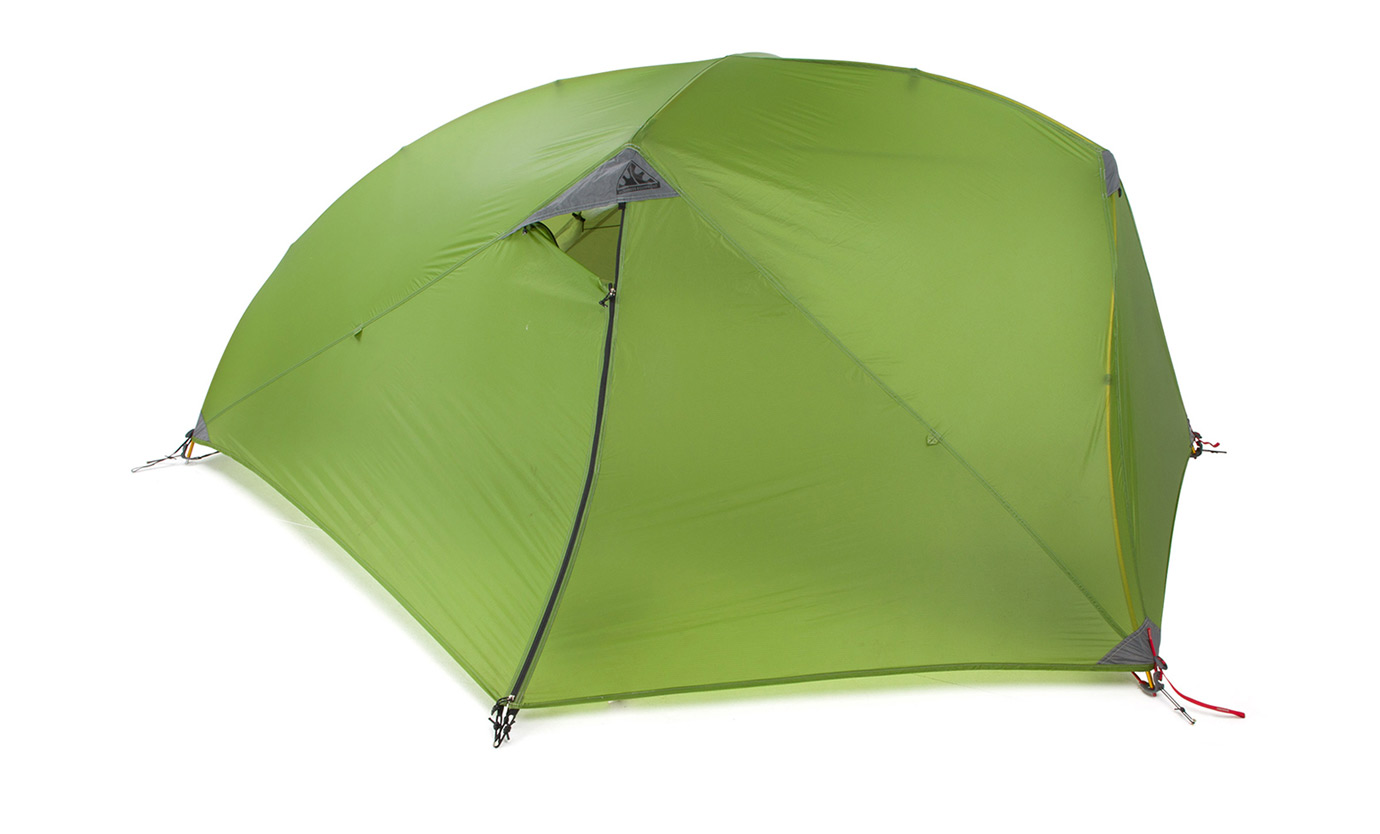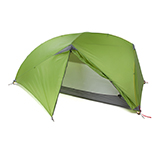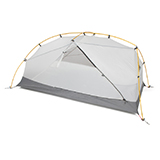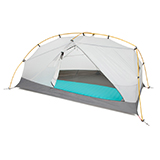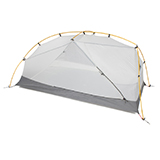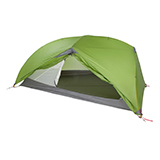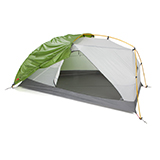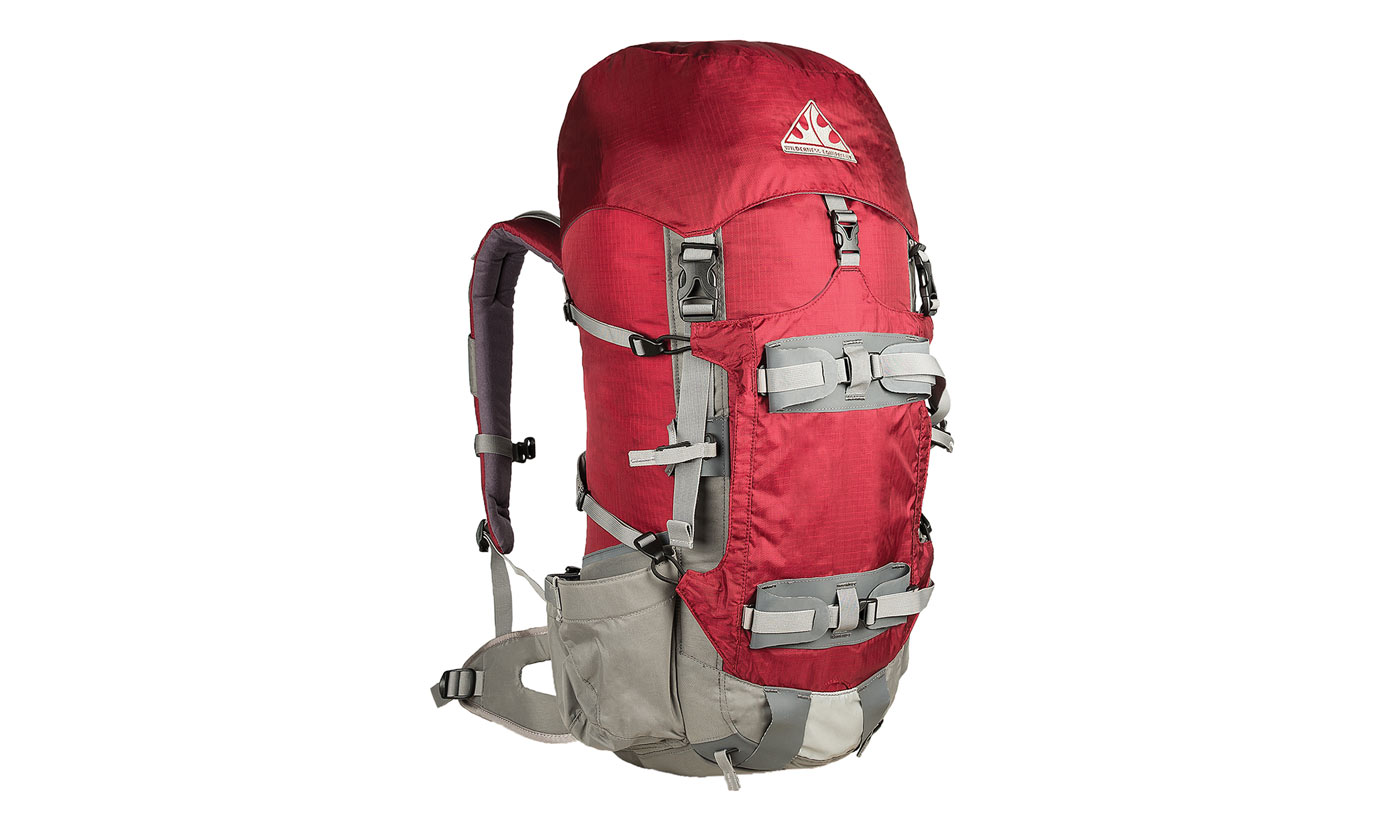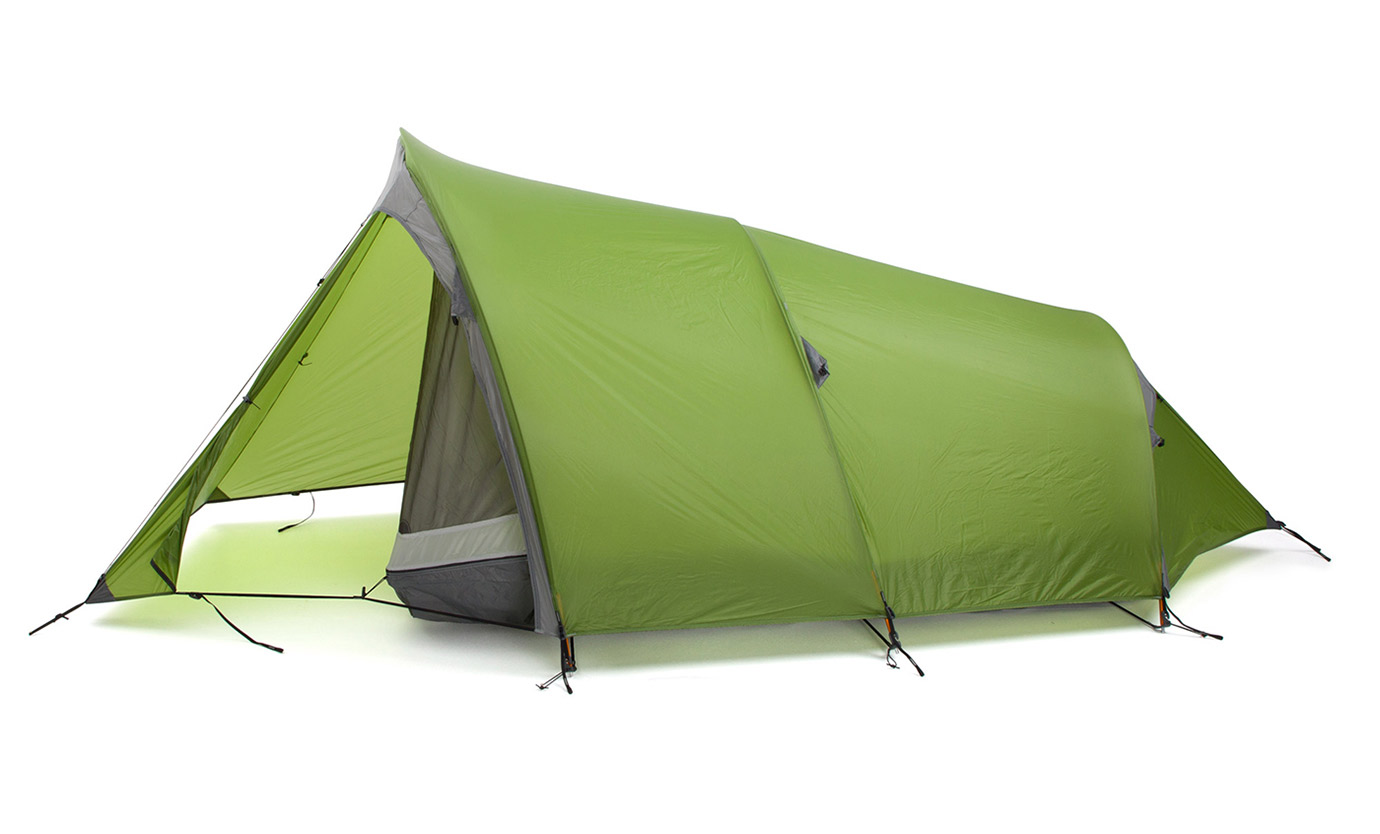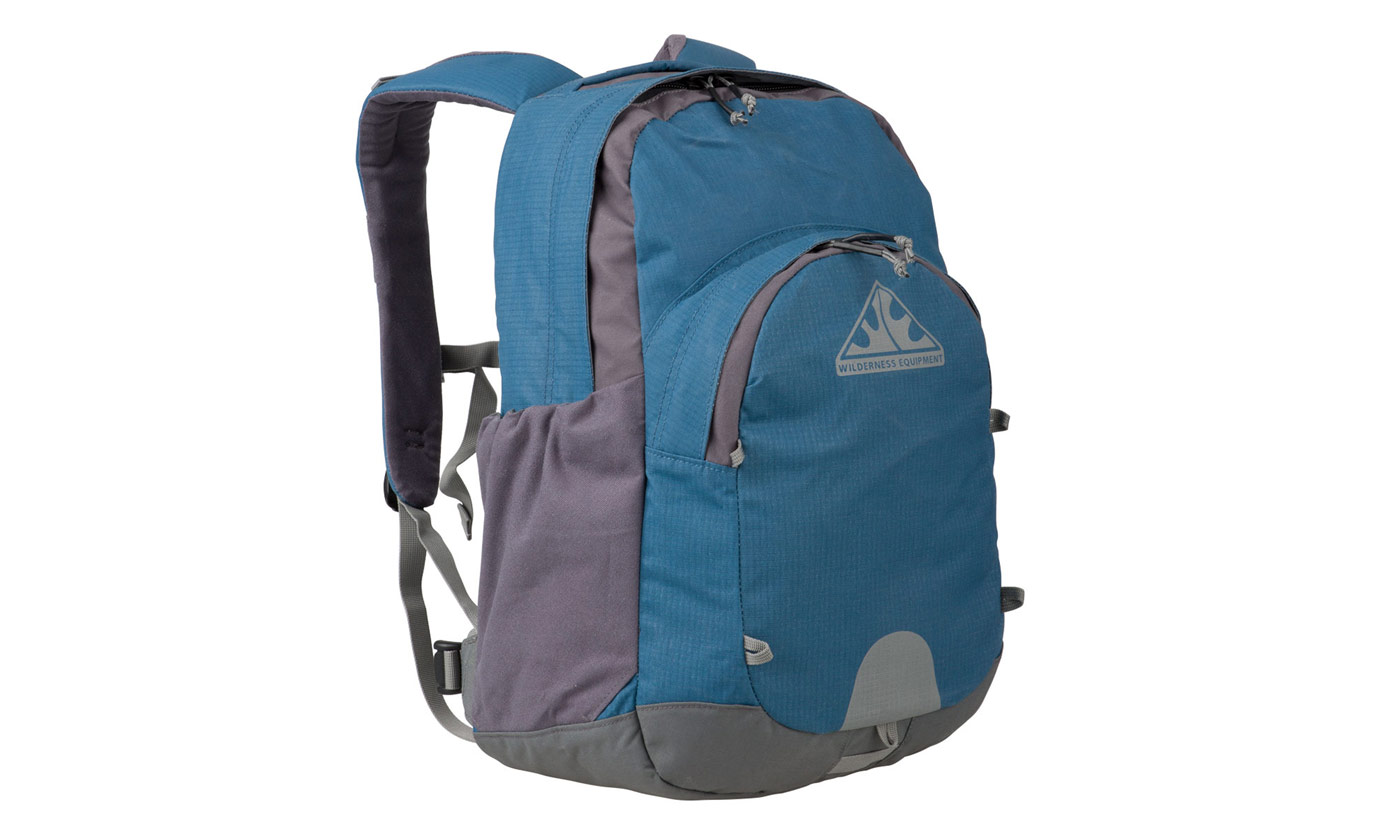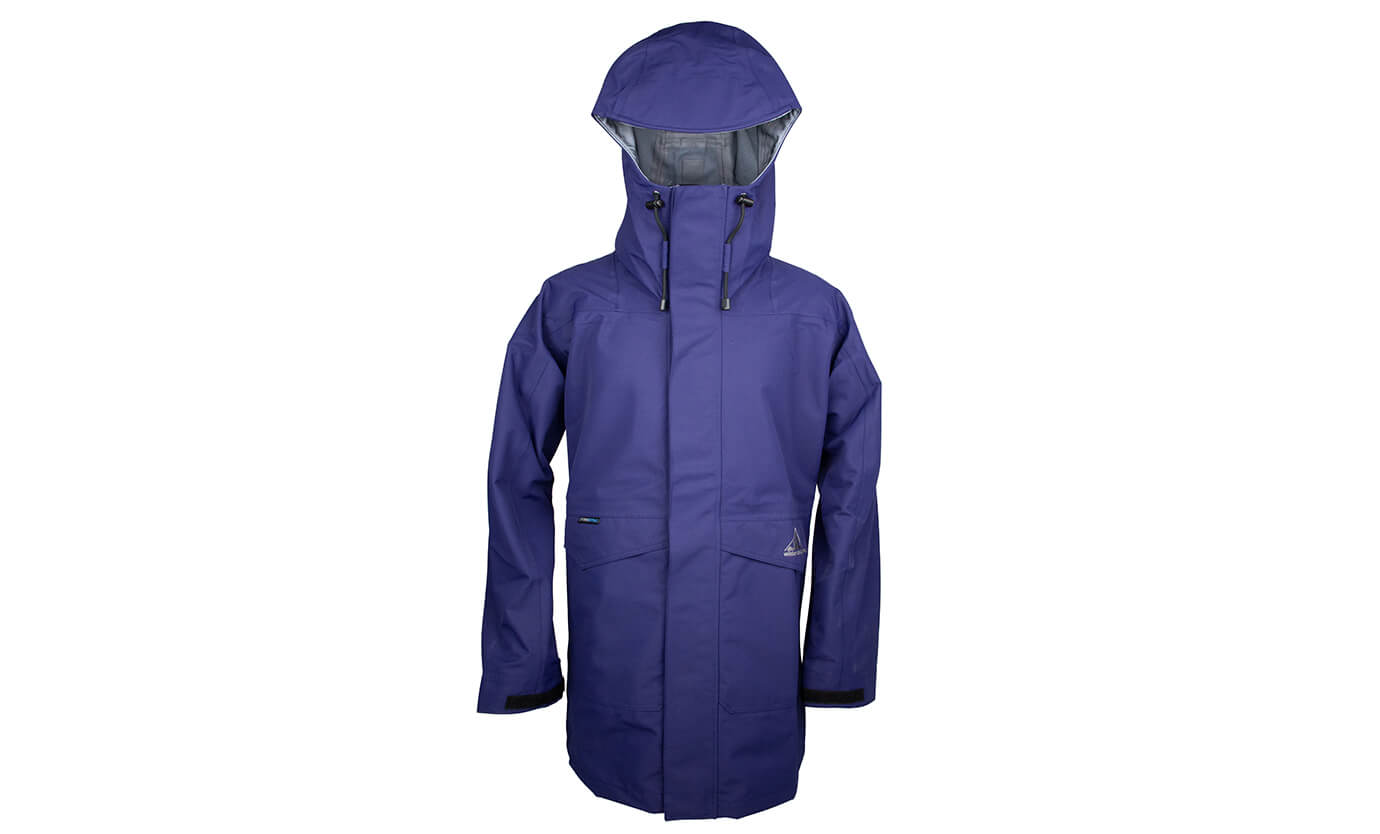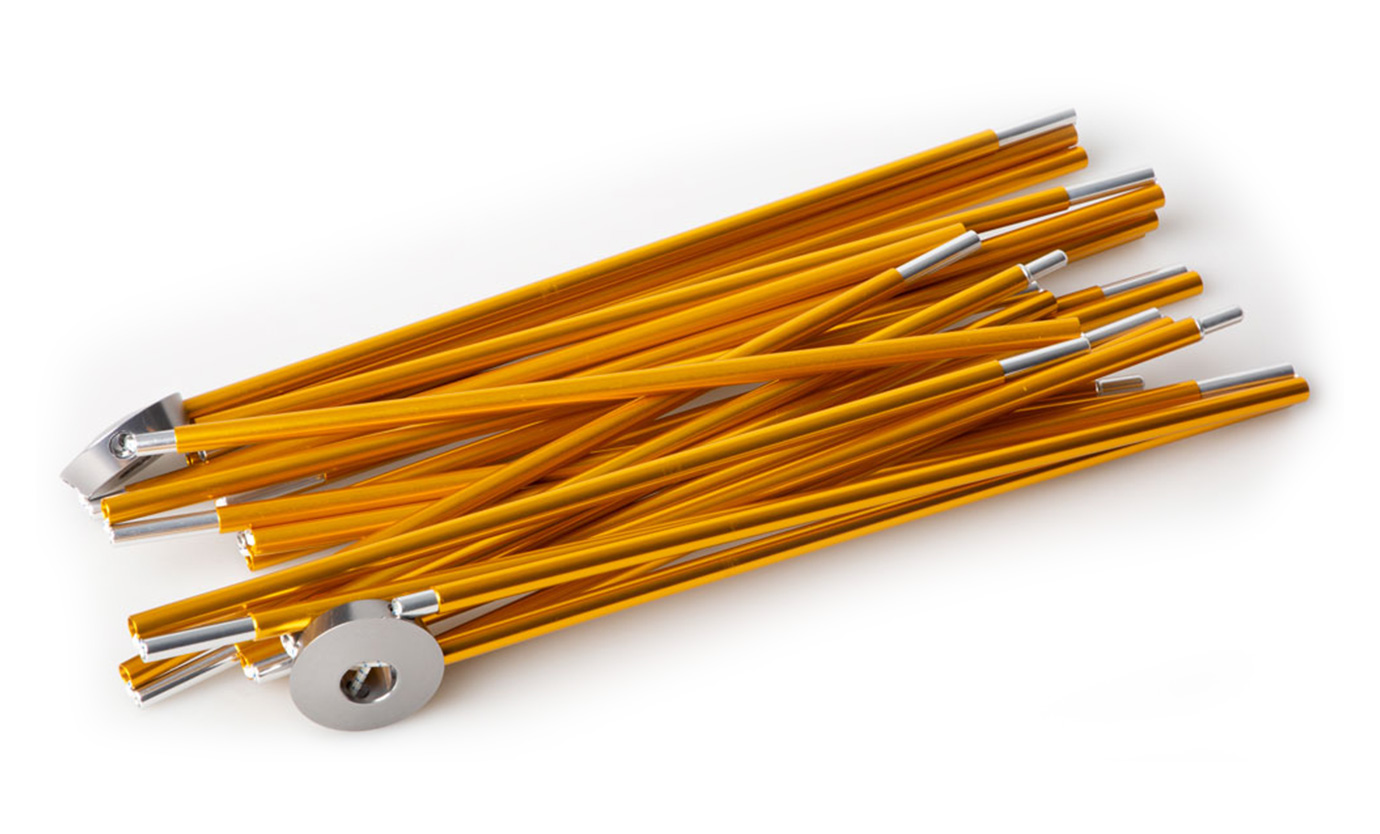Space 1 Winter
WE04931For solo travel through wet and cold climates the Space 1 Winter excels. The internal volume is maximised within a compact exterior, providing an extraordinarily liveable space uniquely suited to handling inclement weather. We have applied the materials and construction techniques used on our popular Space 2 model to create this smaller, lighter package for solo hiking and cycle touring. We have used our unique dihedral 3-way pole hubs to create a low-profile, wedge-shaped tent envelope with an incredibly spacious interior. With the use of low denier, high tenacity nylons throughout, the Space 1 Winter is extremely light given the floor performance has not been sacrificed in the process - the high grade PEU coating delivers a minimum waterproof coating (HH) of 5,000mm. The Space 1 is uniquely equipped to stand up to strong wind - the conditions that send other tents in this weight category packing. You can invert your walking or ski poles and make them part of the Space 1 framework. Connect up the tent's internal hub-to-hub tension cord as well and the Space 1 achieves a level of stability only seen in heavy, multi-pole geodesic tents.
-
Features+
- Spacious, stable, 1.5-person, super-light backpacking tent
- Ground sheet option available for use with the outer tent
- Effective, innovative outer tent vent at ridge height
- Outer tent fabric: Siliconized 30 denier Nylon 6, 3000mm HH sil/sil coating
- Inner tent fabric: Light Grey 20d air-permeable ripstop nylon, Black 20d nylon mesh door screen with full cover
- Floor: 40d nylon with 5000mm grey-pigmented HH PeU coating
- Pole framework: 8.5mm OD 7001 aluminium, WE dihedral hubs, press-fit connectors
- Pegs: 6x 4-Flute HT Aluminium , with reflective pull cords
-
Specifications+
-
Doors:
1 -
Floor Area:
1.94m² -
Floor Dimensions:
2.10m (Length) x 1.14m (Widest Width) -
Floor Fabric:
40d nylon with 5000mm grey-pigmented HH PeU coating -
Inner Tent Fabric:
Light Grey 20d air-permeable ripstop nylon, Black 20d nylon mesh door screen with full cover -
Minimum Weight:
1.47kg -
Number of Pegs:
6 -
Number of Poles:
2 -
Outer Tent Fabric:
Siliconized 30 denier Nylon 6, 3000mm HH sil/sil coating -
Packed Dimensions:
40cm (Length) × 12cm (Diameter) -
Packed Weight:
1.61kg -
Peg Type:
4-Flute HT Aluminium , with reflective pull cords -
People:
1.5 -
Pole Diameter:
8.5mm -
Pole Type:
7002 aluminium, WE dihedral hubs, press-fit connectors -
Seasons:
4 -
Vestibule Area:
0.6m²
-
-
Additional Information+
We're not the type of people who introduce a new product, or new version of a product, every year just to keep the wheels turning. We take a scientific approach to design, drawing ideas from nature and refining them to the highest possible standard, making material changes only when the evidence tells us that improvements can, and have to be, made. Looking around our tent range you will see products (such as the First Arrow) which have been architecturally unchanged since inception, with material updates happening at the speed of the industry. These types of products are perennial, supporting never changing ideas, and offering an insight over the course of many decades into what can be achieved using modern lightweight materials, coupled with proven, durable construction techniques. This being the case, we were incredibly late to the party in introducing a hub style tent design into our range, as we only forge ahead with a new design if we feel it is actually going to improve the wilderness experiences of our users. We introduced our Space tents in 2014 after a long development period, and we are happy to say that if you're looking for a lightweight backpacking tent defined by performance in high winds, as well as providing complete protection from pouring rain, incidental snow-loading, and insect swarms then these are for you! But how did we get to this point?
Hub style tents have been around for many years, and offer several advantages: they are self-supporting, if not truly free-standing; they provide good internal space, with a relatively low weight penalty; and they are incredibly easy to pitch. However, with these advantages come several disadvantages, which other shelter designers have chosen to ignore, but we have embraced to conceive a hub tent concept that is truly unique, and functionally brilliant.
So, to walk through the questions we asked in designing our Space Series Backpacking tents:
- How can we reduce sag between the hubs under rain and snow loading?
- How can we ensure that ventilation can be tailored to meet the immediate needs of the user?
- How can we maximise internal sit up room and living space, while also having the smallest possible external profile?
- How can we ensure that the functional lifetime of these tents will be longer than that of their peers?
The first question, how to reduce sag between the hubs, is a big one. When a tent sags, the fabric panels become unnaturally slack, opening them up to damage. This must be avoided at all costs, and there are two ways in which we have constructed Space Series tents to reduce sag. The first is cutting the fabric panels for the outer tent so that load is born through the tent along the preferred axis of the fabric. All fabrics have a warp and weft, one direction providing strength, the other stretch. If you incorrectly cut the fabric panels for a shelter so they stretch when you really need strength, your tent is going to sag and distort under load. As such, we have ensured fabric panels have been cut and oriented to be bear load and minimise sag. The second way in which we have used construction to decrease sag is through using non stretch binding on the inner tent between the ends of the transverse ridge pole, and the point at which the inner tent attaches to the poles near the hubs. This can only be achieved when the design includes a triangular, double zip door (which has its own functional advantages anyway), as curved zippers do not allow fabric panel orientation to be optimised. Going beyond construction techniques, you also have the option to hook up the internal hub-to-hub link strap (think of it as an internal guy rope), which isolates sag to the top ten percent of the tent by preventing the hubs from distorting, To completely remove sag from the framework, you may also install your trekking poles under the ends of the transverse ridge pole, providing support to the top of the framework. We recommend this action when incidences of heavy rain and high winds, or snowfall are expected.
Ventilation is the most important aspect of any tent, regardless of where it is going to be used, as condensation build up (although sometimes unavoidable) should always be kept to a minimum. In tropical environments condensation has the potential to soak you and your gear, whereas in alpine environments or below freezing conditions if we fail to remove warm, moisture laden air from the tent we will find freezing dew failing on our gear inside the tent, and build up of ice on zips, hindering functionality. On Space Series tents we have positioned the vents as high as possible, to allow for the immediate expulsion of moisture laden air, preventing condensation build up internally. This vent position is very important, because if we had put it down low at hub level, as you will see in other hub style tent designs, it will allow for warm air to pool in the top of the tent, before expulsion, increasing incidences of condensation build up, affecting your comfort. We have also positioned the door zip vertically, running in a straight line from the ends of the traverse ridge pole, down to ground level. This allows you to open the vent (situated at the top of the zip) as little or a widely as suits your needs. It also allows you to open either side of the door to increase ventilation, by acting as a catching feature to amplify the effect of a light cooling breeze, directing it into the tent in warmer conditions. In wet conditions, when the doors are rolled back, they toggle in place, forming a gutter, so you won't have water dripping on you from the outer tent as you enter or exit the inner.
The unique framework in Wilderness Equipment Space Series tents utilises our dihedral hub, which changes the arc of the pole as it junctions at the hub. This allows us to have real, useful sit up height in more places within the tent, while also keeping the external profile as small as possible. These tents are remarkable in their ability to look small from the outside, while maintaining better internal space and liveability than their peers. The reduction in overall size is very important, as it reduces drag, and reduces unnecessary external height, leading to a greater performance in high winds. Back to back with comparable tents in this class, Wilderness Equipment Space Series tents are lower and more aerodynamically sensible externally, while also having much better internal space, meaning from comfortable nights for you.
Beyond everyday functionality one thing which is very important to us is that our equipment lasts as long as possible, as this reduces our environmental burden through reduction of waste. We specify fabrics and develop construction techniques to provide the longest possible functional lifetime, when coupled with excellent care, cleaning and storage. Our Space Series tents utilise a high tenacity Nylon 66 outer tent, with a silicone coating on both sides of the fabric. The silicone provides great sun protection to the Nylon yarn, slowing degradation under ultraviolet light, and leading to a longer lifetime. Silicone fabrics can also not be seam sealed, so we use silicone coated threads and lap felled seam construction to build watertight unsealed seams, which are positioned high on the tent to prevent water entry. On our floor fabrics we specify Ether based Polyurethanes (more expensive for us), which don?t hydrolyse like the normal, cheaper polyurethanes used by other tent brands. If you have ever owned a tent which has gone sticky, you will know exactly what we are talking about! Looking away from materials now, the most common point of failure on tents is the zip. When you have a curved zip the slider unevenly wears each side of the zipper, when it turns a corner. This leads to premature failure, which in the field can even be life threatening. Wilderness Equipment Space Series tents completely avoid curved zippers on doors, running in a straight line instead. This means that the zips last longer, under exactly the same level of use, keeping you happy, comfortable and safe in the wilderness.

